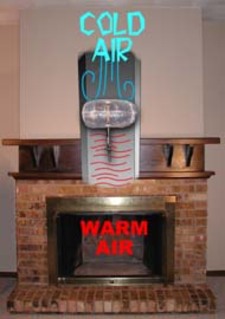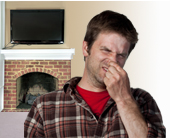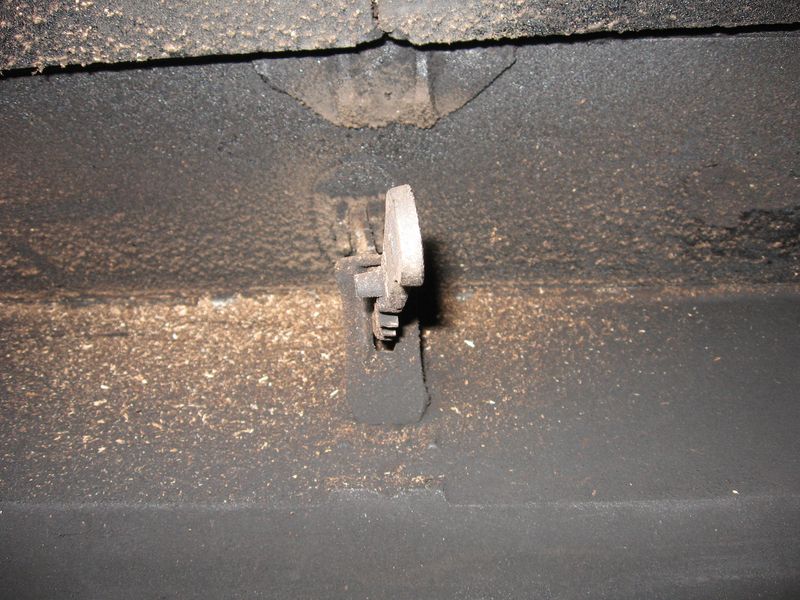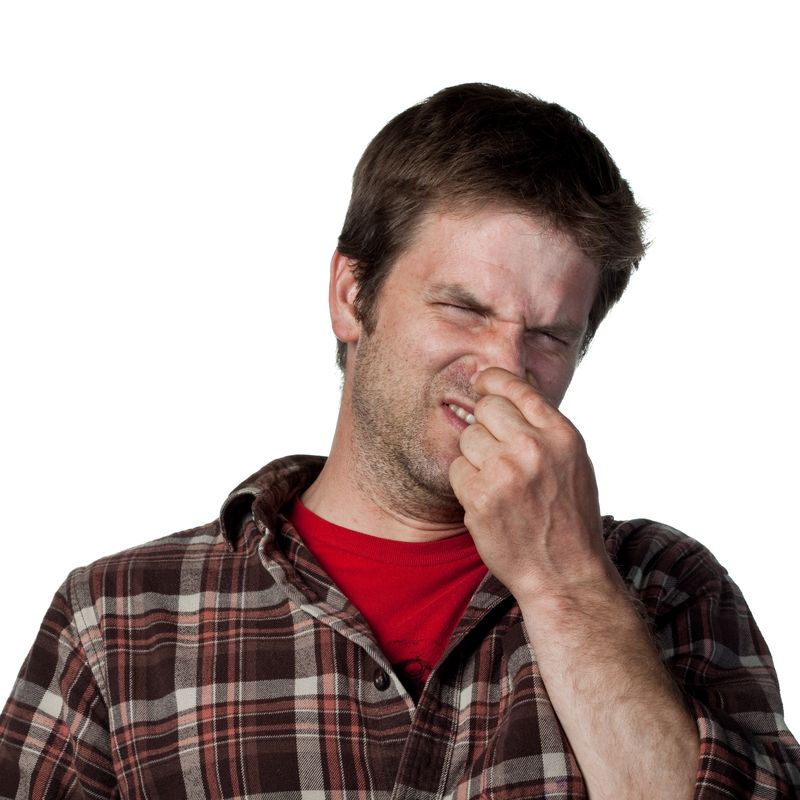
by blogediter | Jun 1, 2018 | Chimney Problems
OLYMPUS DIGITAL CAMERA
This is a story from a Chimney Balloon customer that talked about their Chimney Balloon and how it solved their leaky & stinky chimney problem on Google Home Improvement groups.
Below was the resolution to their problem:
Hello, I just thought I’d post an update and the conclusion of my fireplace saga, in case it’s of use to the next person looking for fireplace help.
First, we called the fireplace guys back, who said the old damper maybe wasn’t working after all and also found more suicidal squirrels. They removed them and installed a new damper cage.
There was no improvement with the draft, only it was more smoke and less foul. We were considering our options and we’re going to call and give the chimney guys hell.
We decided to get one of those chimney pillows as a temporary stopgap until we could get the problem solved once and for all. In the meantime, we noticed that bricks on both shoulders of the fireplace were loose and there was lots of cracked mortar and moss. There was no direct evidence that this was causing the draft – no air coming out, the lining was intact under the bricks, that we could see at any rate. But it was clear that this was only going to get worse if water and plant life kept getting in and we didn’t want bricks to start falling off the chimney.
So hubby bought a chimney pillow and some sort of masonry cement caulk
and glued the loose bricks and filled in the large cracks.
Instant cure. We weren’t even trying to fix the draft problem, and I still don’t know exactly where the leak was coming from, but this fixed it. We still get some smell when the heat or certain fans are on, but that’s expected. The Chimney Balloon will fix probably that.
MK
This was the initial posting of their fireplace problem:
Hi
Good morning,
I am having an ongoing fireplace saga that I am hoping the good folks here can help me with. We just bought a townhouse this fall, built in 1973, with a fireplace. To make a long story short, here’s the timeline of what’s been going on.
The fireplace was sealed (opening covered in plastic wrap) when we bought the house. We unsealed it. Fire burns fine, but the smoke smell and strong draft pour in when not in use.
Did some research, found out about negative pressure – the house seals like Tupperware so this makes a lot of sense for us. We opened a window in the basement next to the furnace. No change.
Brought in a professional to do the sweep/inspection that we should have done in the first place. He cleans out the chimney, fixes the damper that was apparently never closing, removes an interred squirrel of great antiquity. He also replaces the crown and says water has been leaking in and causing mold for a long time.
The draft problem is now completely fixed, but the strong smell still fills the living room and creeps around the house from there – a foul, wet, moldy-sooty smell.
So I see two angles here. One is trying to improve the condition that is still causing the fireplace air to come in. The other is dealing with the nasty smell in the fireplace. But this is so far out of my realm of experience, I am not sure. I don’t mind a little soot smell, I understand that’s part of owning a fireplace, but you can’t stay in that room and breathe without opening a window.
What should we do? Will a steady regiment of fires and ventilation improve things over time? Is there something more drastic we will need to do? Is there something that might kill the mold we suspect is up there? We think the fireplace may have been sealed from the inside but exposed and leaking to the outside for the 12 years the previous owners lived here. Is there an air-tight plastic cover or something we could fit over it when not in use?
Any help would greatly be appreciated.- MK

by blogediter | Mar 28, 2018 | Chimney Plugs, Fireplaces
Fireplace aroma out of the house
Q: We have caps on our chimney. But no damper. Will the Chimney Balloon still work to keep the smells out when fireplace is not in use?- JW
A: Dear JW, the short answer to your question is “yes” on both accounts. The Chimney Balloon will seal the Chimney nice and low to block out the smells. It will also seal your Chimney so you do not lose so much heat up the flue in the winter or A?C in the summer. If you have any lingering smells often times a large bowl of vinegar kept in the firebox for a few days will neutralize them.
Here is a link to a blog article of a customer that solved the very issue you are referring to:
http://www.chimneyballoonusa.com/blog/2007/06/how_a_chimney_b.html

by blogediter | Aug 9, 2017 | Chimney Problems
Why do Dampers Leak Cold Air Even When They Are Closed?
Fireplace dampers are a 300+ year old invention. They are not much different today than they were 300 years ago. Here are 6 reasons dampers leak cold air:
- Dampers and their frames are made of cast iron or sheet metal, so even a brand new damper that has never been used is leaky. The metal on metal contact points do not close perfectly, and you cannot have weather stripping on a damper door or it will burn off when you use the fireplace.
- Dampers are heated unevenly with an open flame on a regular basis. This is a recipe for metal warping.
- Dampers conduct heat and cold because of their solid metal construction. There is no insulation or R-value to a damper door.
- Dampers get coated with creosote and soot. This coating tends to build up and cause a crust that further foils the metal on metal contact points. This crust can be removed with some scrubbing, but even chimney sweeps rarely spend time cleaning the damper itself. They just scrub the flue and smoke chamber.
- The hinges on a damper are crude mechanical devices usually consisting of two interlocking fingers or just a pivot point. They are not continuous like a piano hinge. If you push on the hinge side of a damper door, you will see there is not much holding it together.
- If you have a vented gas log that was professionally installed, the damper was blocked open or removed. According to code, when a gas log is installed the damper must be locked in a fully open position. This causes an enormous amount of heat loss.
As you can see, dampers are poorly designed to serve as a dam to hold back your interior heated air and to keep cold outside air from seeping in. Using a product like a Flueblocker, a Chimella or a Chimney Balloon in your dormant fireplace can go a long way to stop heat loss, make your home less drafty, and save money on heating and A/C bills.

by Jason Raddenbach | Aug 4, 2017 | Chimney Problems
Q: In the Spring and Summer my fireplace sits unused and unloved. When it gets warm outside, and especially when it is raining, my fireplace smells like smoldering sweat socks! When I have visitors over the smell is embarrassing. I have tried every air freshener ever made, and it doesn’t help. How can I stop the stinky fireplace smell? – JO
A: Dear JO,
This is a very common problem. Before you invest in a 55 gallon drum of Febreeze, lets talk over what is causing it. In the spring and summer we close up our houses and start using the air conditioning. This gives your house limited access to outside air. When you turn on your bathroom fan or clothes dryer you start taking your inside air and you chuck it outside. This makes your home search for the path of least resistance to suck in air. Often that is through your loose and leaky fireplace damper.
Heat and humidity make ash and creosote acrid and stinky. Creosote is acidic and it releases a gas when it gets wet. So you have this stinky dirty snorkel tube (also known as a chimney) that you house is using to suck through, yuck!
Now that we know why the fireplace stinks, lets talk about steps to stop it:
- We have 3 types of chimney draft excluder plugs that work well to stop odors. The Chimney Balloon usually installs in the smoke shelf, The Flueblocker installs below the damper, and the Chimella installs in the upper smoke chamber or flue tile. Here is a link to an article that shows a diagram of where each product installs at.
- Once you have one of these products installed, you will shut off the flow of intake air through the chimney, and your house will be forced to find another location to draw air from.
- If it has been more than a year since your last chimney cleaning, you may want to have it looked at by a CSIA certified Chimney Sweep. But be forewarned, that a scrubbing and cleaning will often make the chimney odor stronger just after cleaning. So make sure you get your chimney plug right back in after the chimney sweep has done his thing. *
* Some Chimney Sweeps put a hard sell on you to put a top seal damper on your flue. They run anywhere from $650 to over $1000 installed. We have another blog post about top seal dampers.



